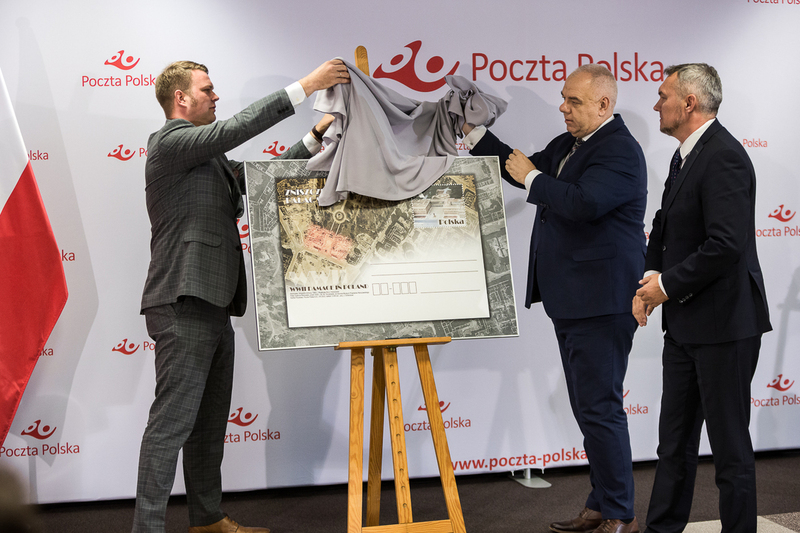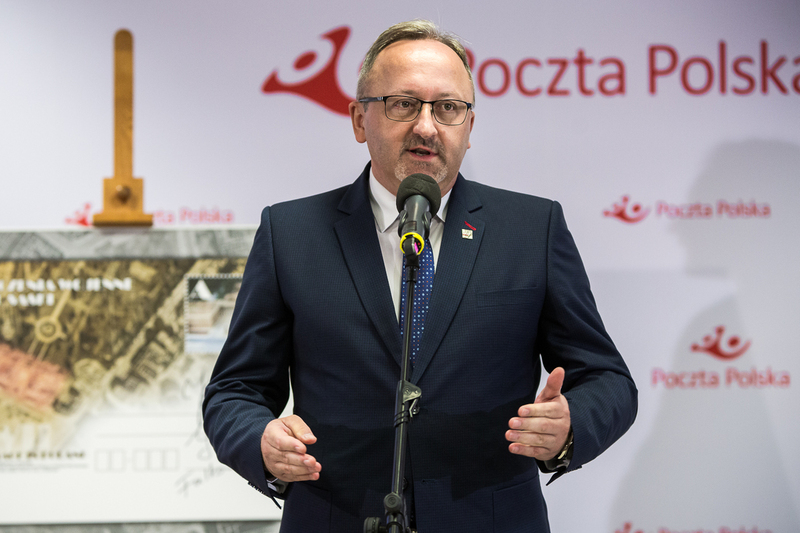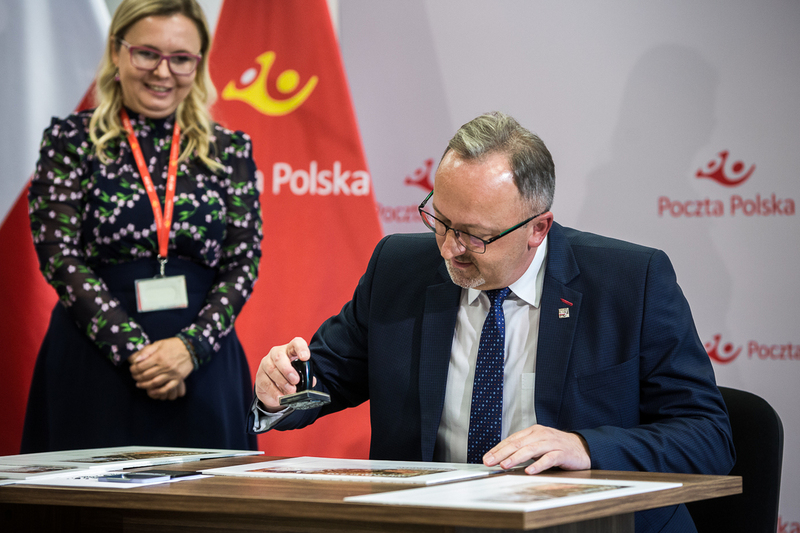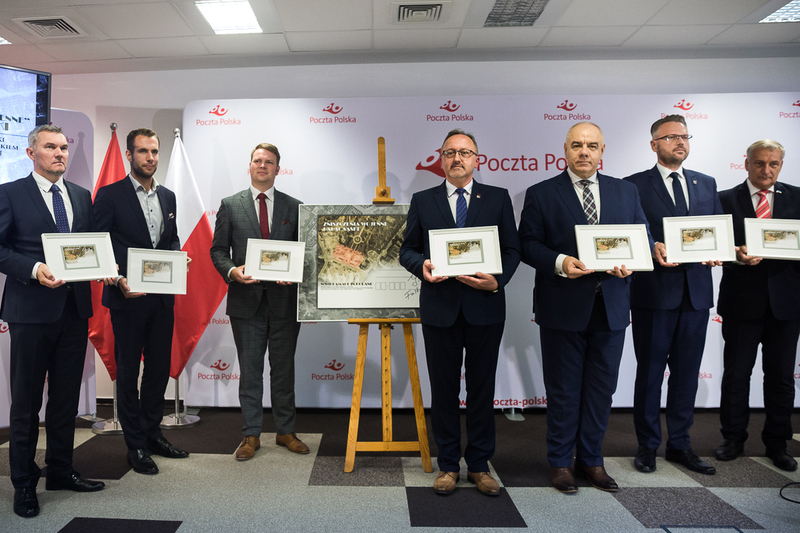The series will exhibit long-lost architectural treasures, erased from the Polish landscape either by WWII military operations or intentional acts of occupying forces. The Saski Palace is an example of the latter: shortly after the Warsaw Uprising, it was blown up on Hitler’s orders in retaliation for the revolt staged by the Polish underground. The next postcards will bring back the images of more historical buildings and landmark structures missing from Warsaw and other parts of Poland for several decades.
In 2021, on the 77th anniversary of the Warsaw Uprising, the Polish Post released an album devoted to the postal workers who participated in the fights, compiled in cooperation with the IPN. In March this year, the Institute Deputy Head Karol Polejowski opened the Post exhibit on Cursed Soldiers, and on the premises of the Strzelecka Street museum presented a postage stamp dedicated to Józef Franczak, the last of these soldiers. In the current project, the Polish Post was assisted by experts from the Central Army Library, Military Historical Bureau, Pałac Saski Sp. z o, o and Warsaw Rising Museum.



